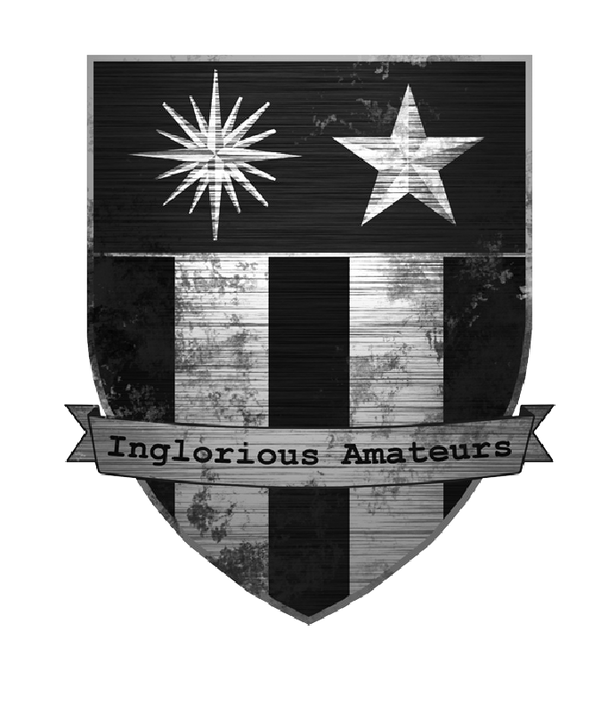Art at the Agency wasn’t really anything I thought about when I wandered its hallways. For the record, like most Ops Officers, I tried to avoid Headquarters (HQS) as much as possible. But that wasn’t always possible. Additionally, I was 23 years old, and too excited about working for the CIA to pay any attention to art.
Of course, I traversed the hall containing the Directors’ portrait gallery countless times. And I remember lots of old school anti-communist propaganda posters in various hallways and vaults and various homegrown intelligence themed “art” in scattered cubicles.

Found in a 90’s era cube at the Agency, “Artist” unknown
(courtesy of the Author’s collection)
There was as well the then fairly small intelligence history museum that took up a corner of the New Headquarters Building (NHB) lobby. And we all took turns staring at Kryptos, the encoded bronze sculpture in the courtyard, full expecting it to be solved by the resident brainiacs in short order (spoiler alert 27 years later, 3 of the 4 panels have been solved, one remains).
I didn’t even know there were folks who paid attention to what art should hang on the walls. But apparently, folks have been doing that since the 1960’s. According to the Agency’s website “CIA’s fine arts program—administered by its Fine Arts Commission since the 1960s—has benefited over the years from donations of sculptures and paintings that celebrate historical accomplishments in intelligence. The commission reviews donation proposals and, when it finds them appropriate, officially recommends works for acceptance. Before any work is accepted, however, Agency financial and legal officers, the Office of Security, and the Office of Public Affairs all consider the recommendation. The CIA Museum and History Staff of the Center for the Study of Intelligence advise the Fine Arts Commission on historical content.”
I know, shocking, that the Agency would have to have financial and legal officers review the works, not to mention the Office of Security. End snark.
There are two art collections that line the walls of the CIA. An abstract collection, currently comprised of 11 paintings, and an “operational” collection of another 22 pieces.
The Abstract Collection
In 1988 11 pieces of abstract art from the Vincent Melzac collection representing Washington’s Color School were bought, and another 18 were borrowed in 2000. Melzac was a well-known, if controversial, business executive who was acknowledged as one of the pre-eminent collectors of the Washington Color School. Melzac had loaned paintings to the Agency as far back as 1968, always without the knowledge or permission of the original artists. In 1982, then Director William Casey awarded Melzac the Agency Seal Medal, awarded to civilians who have made significant contributions to the Agency’s intelligence efforts.
According to the Agency’s website, “Every day, Agency employees walk past several abstract paintings that hang throughout the Headquarters buildings. These paintings do not just break up the acres of wall space. They represent an elemental approach to art, a swashbuckling donor, and a connection to the architecture of the [Old Headquarters Building].” It is believed that these paintings were selected because they matched the architecture of OHB (built in 1961) and focused on the only art movement generated in Washington DC. Others speculate that the collection was chosen because “the Washington Color School’s clean lines constituted a pro-American aesthetic” and thus, would symbolize a bulwark standing against Communism’s spread across the world.

Black Rhythm Gene Davis c.1964 (image courtesy of CIA.gov)
This is the Agency’s only work by Gene Davis, one of the most noted of the Washington Color School artists. In a conscious effort to “purify” his work, he reduced painting to the fewest possible elements, that of equal-width stripes. He felt that this matrix allowed him to emphasize color orchestration, saying: “I paint by eye as a jazz musician plays by ear.” The stripes, like a drummer’s beat, provide the unity through which colors interact. Such a painting cannot be grasped all at once: Davis suggested that the viewer follow one color across the composition, seeing how the intervals work, what the rhythms are like between related colors. He described it as a kind of syncopation. A Washington native, Davis was a sports writer and a White House correspondent before he dropped that career to become a painter. (text from cia.gov)
The abstract art serves as more than just decoration however. One Agency official, Carolyn Reams, has said in other press accounts that the Agency encourages officers to “come down here and do a critical analysis of the paintings” in the hope that such a creative exercise may help those officers solve other problems (ISIL perhaps) with renewed creativity.

“Untitled” Howard Mehring (1959) (image courtesy of CIA.gov)
The Agency’s support for Abstract Expressionism developed far earlier and deeper than the loan of a few paintings in the 1960’s. A 1958 exhibit called The New American Painting had been financed covertly in part by the CIA and by displaying paintings that showcased American values and freedoms served in marked contrast to the school of Soviet Social Realism. More about this, however, in another article.
Part 2 will detail the Operational Collection made up of intelligence-themed paintings and sculptures that record the experiences of intelligence officers in both peace and wartime.
